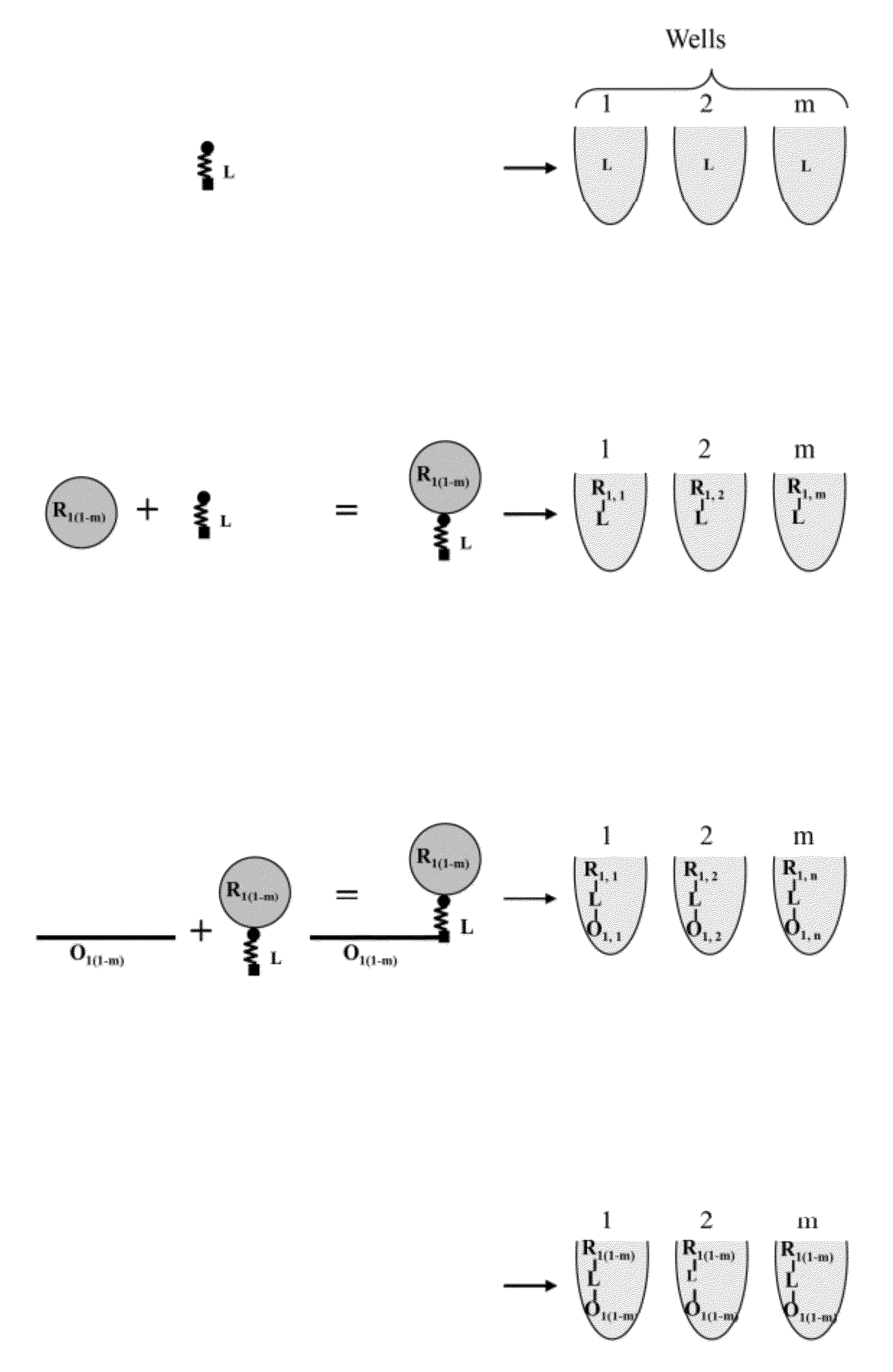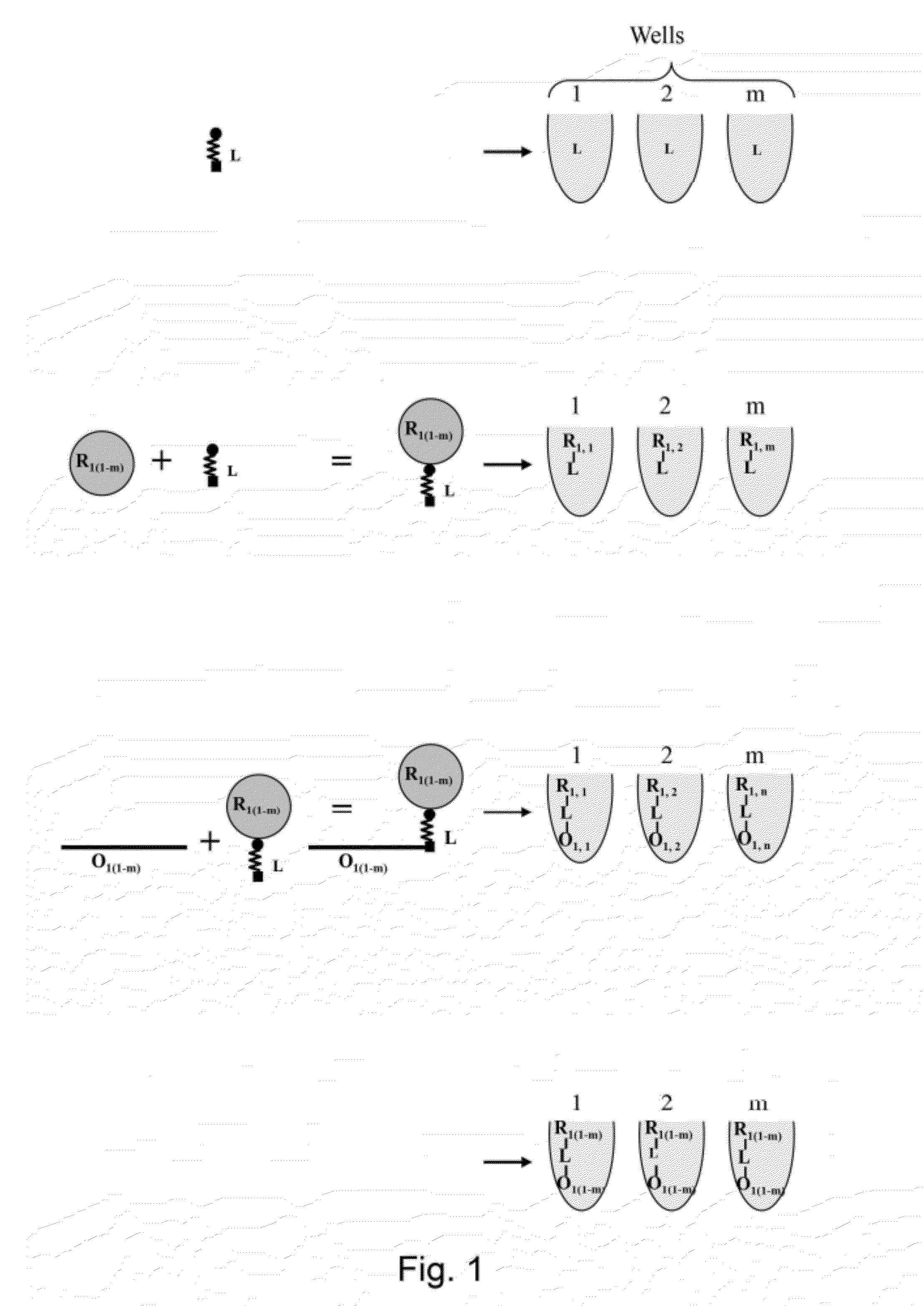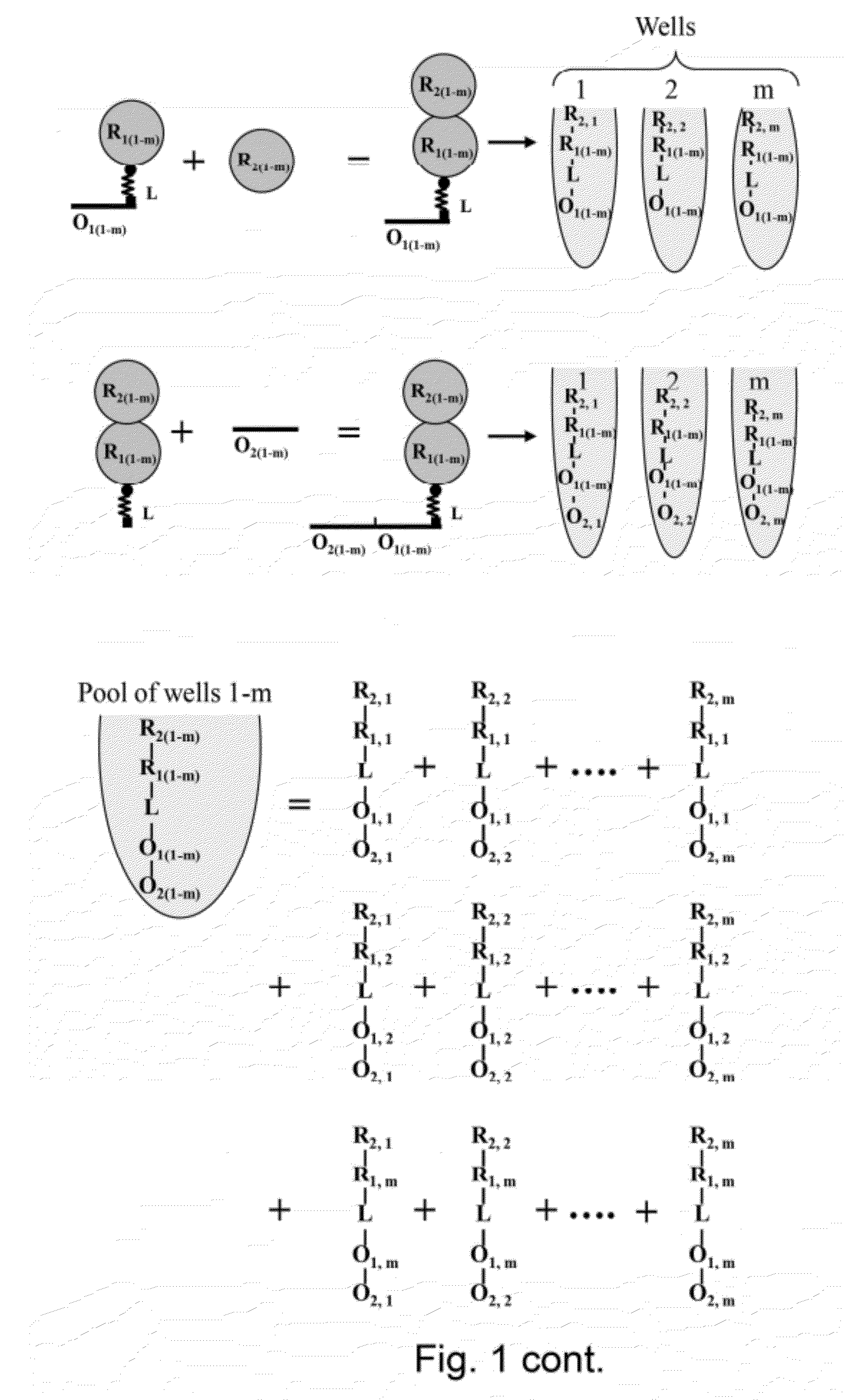Template directed split and mix systhesis of small molecule libraries
a technology of systhesis and small molecules, applied in the field of encoded molecule synthesizing, can solve the problems of time-consuming and expensive lead optimisation process, and insufficient affinity and specificity of the target, so as to achieve the effect of reducing facilitating or lowing the cost of synthesis
- Summary
- Abstract
- Description
- Claims
- Application Information
AI Technical Summary
Benefits of technology
Problems solved by technology
Method used
Image
Examples
example 1
Formation of a Library of Bifunctional Molecules and Affinity Selection Against the Protein Target Integrin AlphaV / Beta3 Receptor, Employing Subprocesses 3, 5, A and i (First Synthesis-Selection-Amplification Round), and A and i (Second Synthesis-Selection-Round) (See Above), Using Amine Acylations for the Coupling of Molecule Fragments to Generate the Encoded Molecules
[0319]The human integrin receptor av / (3w is implicated in many biological functions such as inflammatory responses and thrombus formation as well as cellular migration and metastatic dissemination. The natural ligands for alphaV / beta3 integrin receptor contain an RGD tri-peptide consensus motif that interacts with the receptor binding pocket. Consequently, much medical research have focused on the synthesis and identification of small molecule RGD-mimetics with increased affinity for the alphaV / beta3 receptor. One mimetic, Feuston 5 (Feuston et al., J Med. Chem. 2002 Dec. 19; 45(26):5640-8.), comprising an arginine bi...
example 2
Formation of Five Different Libraries of Bifunctional Molecules, i.e., Libraries Containing 16, 1.6×105, 6.25×106, 108, or 1012 Bi-Functional Molecules and Affinity Selection Against the Protein Target Integrin AlphaV / Beta3 Receptor, Employing Subprocesses 3), 5), A) and i), Using Amine Acylations for the Coupling of Molecule Fragments to Generate the Encoded Molecules
[0360]This example describes the generation of libraries of five different libraries, i.e, libraries of 16, 1.6×105, 6.25×106, 108, or 1012 bi-functional molecules, and the use of these libraries for selection against the integrin alphaV / beta3 receptor.
[0361]The protocol described in example X1 is followed, except that the sets of molecule fragments are now changed so as to include 2, 20, 50, 100, or 1000 molecule fragments at each of the four positions, leading to the formation of libraries of 2×2×2×2=16, 20×20×20×20=1.6×105, 50×50×50×50=6.25×106, 100×100×100×100=108, or 1000×1000×1000×1000=1012 bifunctional molecules...
example 3
Covalent Attachment of a Carrier to the Template Employed in the Stage 2 Synthesis
[0362]The structure of the identifier template of the bifunctional molecule generated by stage 2 synthesis, and employed in the selections, can be varied. For example, before, during or after the templated reaction, one of the carriers may be ligated to the template by a DNA ligase, if the template for example loops back on itself, as described in FIG. 4, example 3. Optionally, an extension reaction involving a primer that anneals to the other end of the template may be performed, in order to generate a duplex DNA where the encoded molecule is displayed at the end of the dsDNA. This may be done by annealing 1 nmol of a primer that is complementary to the end of the template that is not looping back on itself, and adding sequenase buffer containing 200 micromolar deoxy-ribonucleotides (dNTP) in a total volume of 100 microliter before addition of 20 units of sequenase and incubation at 30° C. for 1 h. Fo...
PUM
| Property | Measurement | Unit |
|---|---|---|
| temperature | aaaaa | aaaaa |
| pH | aaaaa | aaaaa |
| ionic strength | aaaaa | aaaaa |
Abstract
Description
Claims
Application Information
 Login to View More
Login to View More - R&D
- Intellectual Property
- Life Sciences
- Materials
- Tech Scout
- Unparalleled Data Quality
- Higher Quality Content
- 60% Fewer Hallucinations
Browse by: Latest US Patents, China's latest patents, Technical Efficacy Thesaurus, Application Domain, Technology Topic, Popular Technical Reports.
© 2025 PatSnap. All rights reserved.Legal|Privacy policy|Modern Slavery Act Transparency Statement|Sitemap|About US| Contact US: help@patsnap.com



